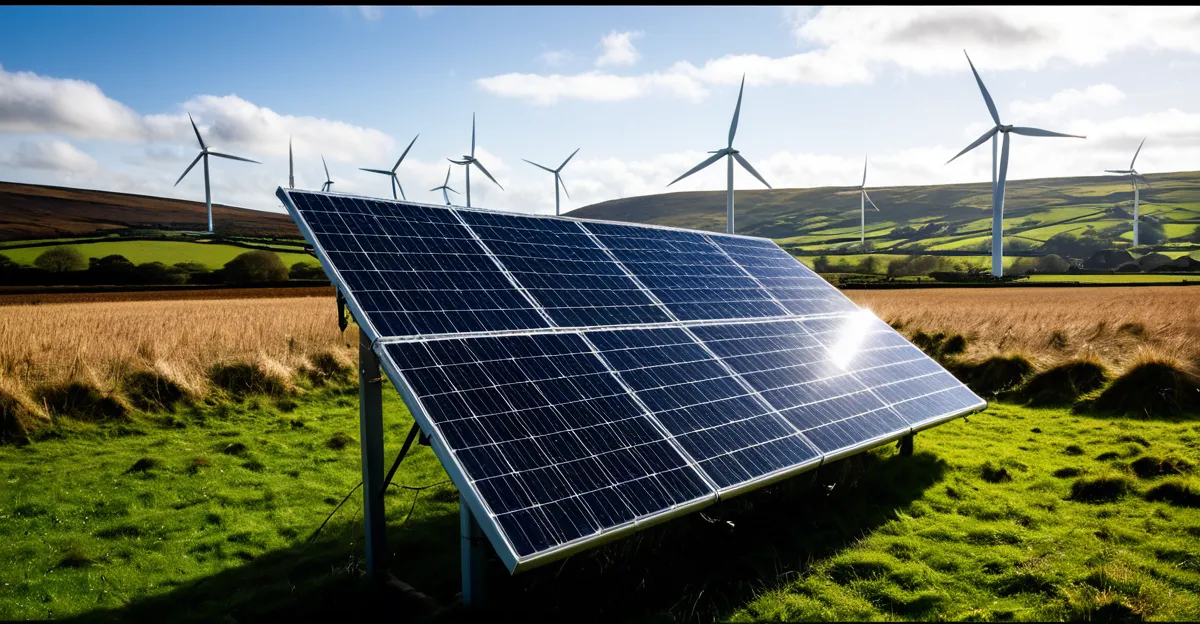Recent Progress in UK Renewable Energy Technology
The UK renewable energy progress has surged notably, focusing on key milestones across wind, solar, and tidal sectors. Offshore wind farms have seen remarkable advancements with higher capacity turbines, pushing the UK to the forefront of global wind technology. Solar power capacity continues to expand, bolstered by improved photovoltaic efficiency and cost reductions. Tidal energy projects have moved from experimental phases to pilot deployments, showcasing potential in harnessing predictable marine currents.
In terms of current renewable advancements, the combined output from renewable sources now accounts for over 40% of the UK’s electricity generation, reflecting substantial growth. This increase is supported by state-of-the-art technology, such as larger wind turbines capable of generating more power with fewer installations. Moreover, tidal energy innovations are gaining momentum, feeding into the UK’s strategy to diversify its clean energy portfolio.
This might interest you : What are the benefits of investing in UK tech companies?
Technology and research partnerships play a vital role in this progress. Collaborative efforts between universities, private firms, and government research bodies have accelerated development and implementation of renewable solutions. These partnerships drive innovation, from materials science improving solar panel durability to advanced modeling optimizing turbine placement, highlighting the integrated approach propelling UK clean energy status forward.
Government Policies and Strategic Initiatives
Understanding the framework behind UK clean energy progress
Have you seen this : What Role Does Artificial Intelligence Play in UK Technology?
The UK renewable energy policy landscape is pivotal in shaping the country’s clean energy status. The government has instituted robust green strategies aimed at accelerating the transition to low-carbon energy sources. Among the foremost objectives is achieving net zero carbon emissions by 2050, a commitment that prioritizes renewables as a foundation for decarbonisation.
To support this vision, extensive funding and incentives target emerging renewable technologies. These include grants for cutting-edge tidal projects, subsidies boosting offshore wind expansion, and tax mechanisms encouraging solar adoption. The government green strategy also promotes research partnerships that drive innovation while mitigating financial risks associated with new technologies.
How does the UK ensure these policies lead to real progress? The answer lies in measurable targets embedded within legislation, such as binding renewable energy quotas for utilities and mandates for carbon reduction across energy sectors. Regular policy reviews assess effectiveness and adapt approaches to market or technological shifts.
In practical terms, this policy ecosystem enables continued growth in renewable generation capacity, reinforcing the UK’s standing in global clean energy rankings. Coordinated initiatives between public bodies and private stakeholders ensure a holistic approach, where policy not only sets direction but actively catalyses current renewable advancements across wind, solar, and tidal domains.
Major Projects and Breakthrough Technologies
Breaking new ground in the UK’s renewable landscape
The UK renewable projects portfolio is expanding rapidly, marked by landmark offshore wind farms like Hornsea One and Two. These installations showcase cutting-edge turbine sizes and enhanced efficiency, setting world records for energy output. Such offshore wind farms contribute significantly to the UK clean energy status by providing stable, large-scale generation capacity.
In tidal energy, the UK is advancing from test sites to commercial pilot projects that harness predictable marine currents, a breakthrough in renewable reliability. These innovative energy technologies demonstrate potential to complement wind and solar, reducing intermittency issues.
Large-scale solar projects are also gaining traction, often paired with battery storage systems. This integration helps balance grid demand by storing excess solar power for peak usage. Additionally, hydrogen production pilots are underway, exploring fuel alternatives with zero emissions, aligning with the country’s net zero carbon goals.
Smart grid solutions form the backbone of these projects, enabling real-time energy management and efficient distribution. Energy storage technologies, including batteries and pumped hydro, are crucial for integrating renewables into the existing infrastructure.
Together, these flagship projects and technologies illustrate the UK’s commitment to evolving its renewable energy mix and securing a resilient, low-carbon future.
Statistics and Industry Trends
Analyzing the data that drives UK renewable momentum
The latest UK renewable energy statistics reveal a striking increase in clean power generation, with renewables consistently contributing over 40% of the electricity mix. This growth reflects a significant shift in the UK clean energy status, where renewables are edging out fossil fuels in market share. For instance, wind and solar continue to dominate with expanding capacity, substantiated by energy production data showing record outputs during peak periods.
Industry trends underscore rising investment levels in renewable technologies, driven by both public and private sectors. These financial inflows are fostering job creation across manufacturing, installation, and research domains, signaling a robust and growing green economy.
Significantly, export growth in renewable energy technology and expertise positions the UK as a competitive player internationally. The trend towards hybrid energy systems combining solar, wind, and storage enhances energy security and grid resilience, addressing intermittency challenges.
In summary, careful analysis of energy production data and sector trends affirms that the UK’s renewable momentum is backed by substantial economic and technological progress. This trajectory bodes well for achieving broader decarbonisation targets and sustaining the UK clean energy status amid evolving market dynamics.
Leading Organizations and Sector Collaborations
Advancing UK renewable energy progress through partnerships
UK renewable energy organizations are pivotal in driving the nation’s clean energy status forward. Research institutions and universities provide crucial scientific expertise, developing innovative technologies that enhance wind, solar, and tidal efficiency. These collaborations have led to breakthroughs such as improved turbine blade designs and photovoltaic materials. Industry partnerships bring together private sector leaders who invest in scaling these innovations, accelerating commercialization and deployment across the UK renewable energy landscape.
Notably, sector leadership often emerges from consortia that pool resources and knowledge, optimizing project planning and risk management. This shared approach enhances technology transfer, effectiveness, and reduces costs, vital for maintaining current renewable advancements. Furthermore, international collaborations enable the UK to access global expertise, participate in cross-border projects, and stay at the forefront of renewable technology development.
Examples include joint ventures between UK universities and global energy companies focusing on tidal energy pilots and offshore wind research. These connections bolster the UK clean energy status by fostering an environment of continuous innovation and knowledge exchange. By integrating academic research, industry capability, and international experience, UK renewable energy organizations solidify a unified pathway toward sustainable growth and decarbonisation goals.
Future Targets and Challenges
Planning the path forward for sustained UK renewable energy progress
The UK renewable energy future is framed by ambitious decarbonisation strategies aiming to build upon significant current renewable advancements. The sector targets substantial increases in renewable capacity, focusing on scaling offshore wind beyond existing projects and expanding tidal and solar deployments. Aligning with net zero targets, these efforts anticipate integrating more innovative energy technologies such as green hydrogen and advanced storage solutions.
Key challenges persist in technology deployment and grid integration. For instance, incorporating growing volumes of intermittent renewables requires enhanced grid flexibility and capacity upgrades. Addressing this involves investing in smart grids and energy storage to maintain stability. Additionally, scaling emerging technologies faces hurdles from high initial costs and complex regulatory landscapes.
To navigate these challenges, government incentives and research collaborations remain critical. They underpin innovation diffusion and reduce financial risks, enabling smoother technology adoption. The sector’s future also depends on workforce development and supply chain resilience to meet rising demand.
In summary, the UK renewable energy future holds promising growth, contingent on overcoming deployment and infrastructure obstacles. Strategic planning and sustained partnerships will be essential to transform today’s advancements into a fully decarbonised, secure energy system.


